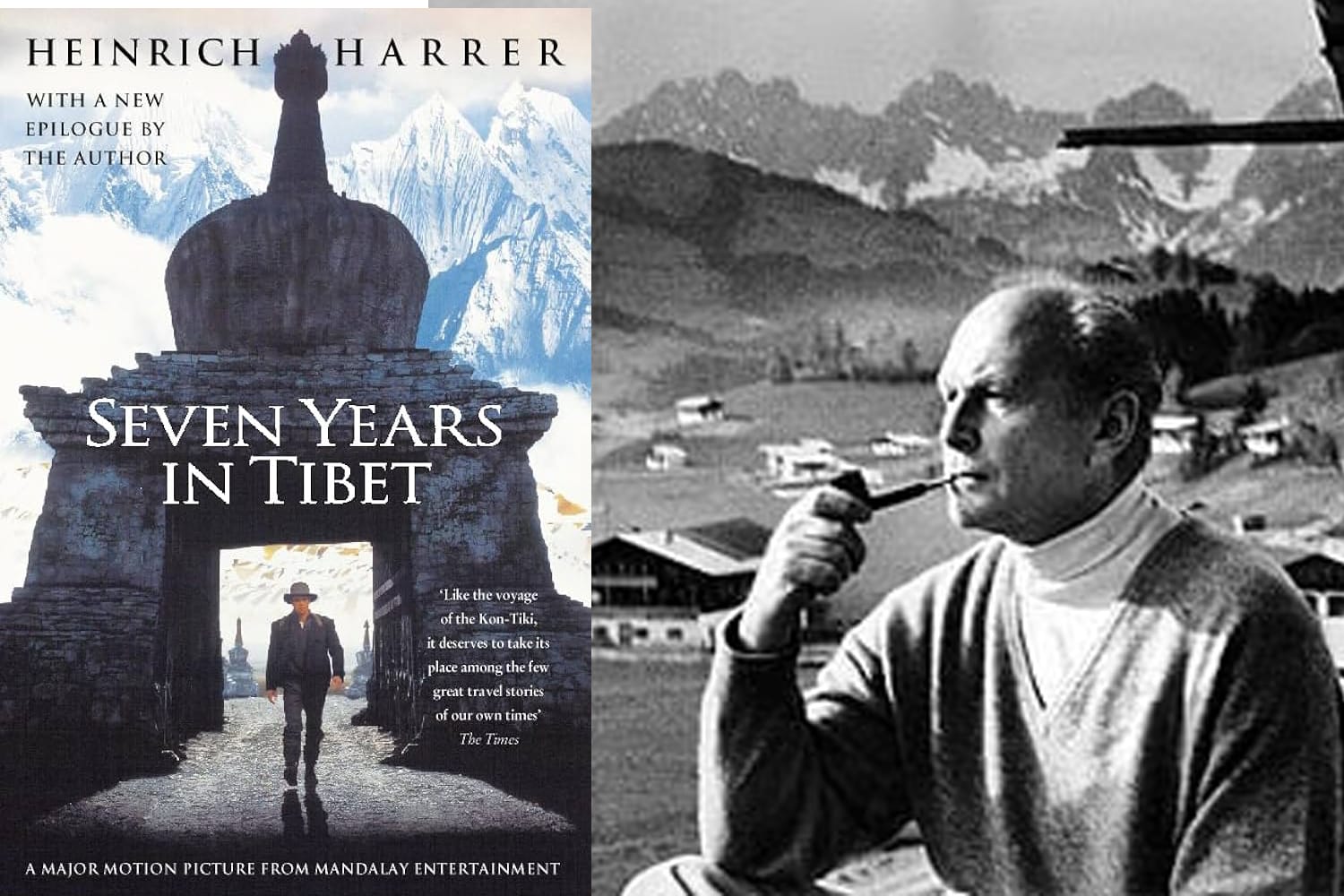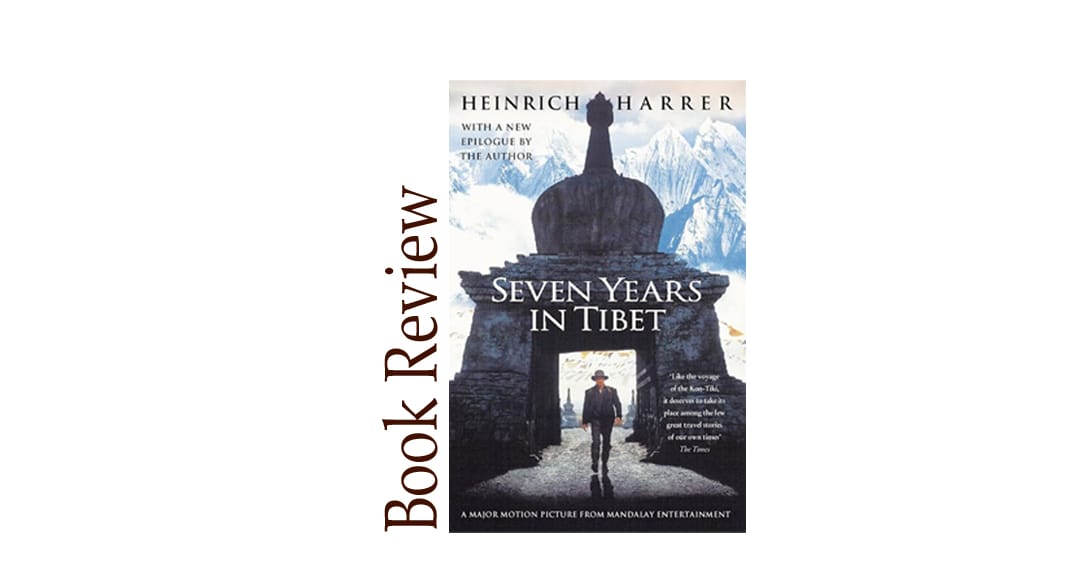- Date Published:
1954 - Length:
368 pages—Listening Time: 11 hr 38 minutes - Genre:
Non-Fiction, Biography, Memoir. Travel - Setting:
1944-1951; the Himalayas, specifically on the treacherous slopes of Nanga Parbat in British India (now Pakistan), Lhasa, Tibet - Awards:
New York Times bestseller 1954; 501 Must-Read Books Emma Beare Travel Writing, 2006; Notable Books List 1954; Extreme Classics: The 100 Greatest Adventure Books of All Time; 1,000 Books to Read Before You Die Page-A-Day Calendar 2021; AbeBooks: 50 Essential Travel Books; Reading the world in 196 books Liechtenstein; Ultimate Travel Library: Around the World in 80+ Books; The Most Iconic Books Set in 150 Countries Around the World Liechtenstein - Languages:
Original German; also translated to: Czech, Danish, Dutch, English, Finnish, French, German, Hungarian, Italian, Japanese, Korean, Latin, Norwegian, Polish, Portuguese, Romanian, Russian, Spanish, Swedish, Tibetan - Sensitive Aspects:
Historical inaccuracies, colonial bias, caricatured Buddhist and Tibetan values, political sensitivity and censorship - Movie:
The movie, Seven Years in Tibet was released in 1997, starring Brad Pitt. - Recommended for Book Club:
Maybe. Strict historians will not appreciate its leniency with the facts.

Seven Years in Tibet by Henrich Harrer is my local book club’s pick for October, and I'm confident it will inspire spirited discussion since our circle is well-travelled, good-humored, and well-read. For this particular book, the intrigue lies more in the book's events themselves rather than the language used to relay them. After savoring (and sometimes slogging through) Harrer’s narrative, I couldn’t help but reflect that the real joy of this book came less from its literary qualities than the sheer drama of survival, escape, and cultural encounter.
In all honesty, I feel this book had no notable literary merit. The prose can be meandering and workmanlike, moving at times almost like a travel diary or a recitation of facts and dates, with scant attention paid to “character” or evocative description. I expect more introspection from someone who supposedly had a religious experience as a result of the book's events. Terms are sometimes left unexplained, and the story’s line repeats itself more often than readers of literary fiction might like. Yet, the action kept me turning pages: Harrer’s trek from prisoner of war to trusted friend of the Dalai Lama is filled with tension and wonder, despite the prose, and it firmly held my attention even though the style didn’t.
Then there is the question of historical accuracy. Harrer’s memoir, and especially the subsequent film adaptation, has faced criticism for factual liberties—including the portrayal of Harrer himself and the handling of events surrounding the Chinese invasion. Historians have disputed major elements, and the book tends to romanticize Tibet, omitting certain political complexities. Before your book club selects this book, I would suggest that someone in your group do a little digging to check out the facts surrounding the book. Don't get me wrong, it's a marvelous story. But make sure that everyone understands that it is embellished and exaggerated one and is not completely historically accurate.
In fact, the book faced significant criticism for its historical accuracy, and rightfully so. Scholars have pointed out that Harrer presents a sanitized, almost romanticized view of pre-1950 Tibet, glossing over the harsh realities of its feudal system that included serfdom and slavery. The Chinese government was so offended by the book's portrayal—and later the 1997 film adaptation—that they banned both Harrer and Brad Pitt and the film's director, Jean-Jacques Annaud from entering China. These criticisms matter, and readers should approach the text with awareness of its limitations and biases.
However, what Seven Years in Tibet lacks in literary merit and historical accuracy, it makes up for in sheer narrative momentum. This remains one of the final firsthand accounts of independent Tibet before Chinese occupation. Harrer's escape from a British POW camp, his harrowing journey across the Himalayas, and his unlikely friendship with the teenage Dalai Lama create an undeniably compelling story that kept me turning pages late into the night. For book clubs seeking adventure and discussion material about cultural encounters, this flawed but fascinating memoir delivers exactly that.

In the frozen embrace of 1939, Austrian mountaineer Heinrich Harrer embarks on what should be a triumphant ascent of Nanga Parbat in India, but fate has other plans. When World War II erupts across Europe, Harrer finds himself transformed from celebrated alpinist to enemy alien, imprisoned alongside his climbing companion Peter Aufschnaiter in a British prisoner-of-war camp in the shadow of the Himalayas. What begins as a tale of wartime captivity evolves into something far more extraordinary—a spiritual and physical odyssey that will reshape everything Harrer believes about himself and the world.
After multiple failed attempts, Harrer and Aufschnaiter finally break free from their confines, setting their sights on the last great mystery of the world: Tibet, the "Forbidden City" where no foreigners are permitted to tread. Their escape becomes an epic journey of survival across some of the world's most treacherous mountain passes, where sub-zero temperatures, altitude sickness, and encounters with notorious robbers test their resolve at every turn. Armed with little more than outdated travel permits, elaborate disguises, and Harrer's remarkable gift for deception, they must outwit suspicious Tibetan officials who have strict orders to turn away all outsiders.
Through sheer determination and cunning negotiation tactics, the unlikely pair eventually reaches the golden-roofed capital of Lhasa, where they discover a civilization untouched by the outside world's relentless pace. Here, time moves to the rhythm of yak bells, and ancient Buddhist traditions govern every aspect of daily life. What unfolds is Harrer's gradual transformation from an arrogant, Western mountaineer into a man humbled by Tibetan wisdom and compassion. The ultimate honor comes when he becomes tutor to the young 14th Dalai Lama, forging an unlikely friendship that transcends cultural boundaries and forever changes both their lives.
Yet beneath this extraordinary tale of adventure and enlightenment lurks the approaching shadow of political upheaval, as China sets its sights on absorbing Tibet into its empire. This memoir captures not just one man's incredible journey, but the final chapter of an ancient civilization standing on the precipice of irreversible change.

Despite historical inaccuracies, Seven Years in Tibet by Heinrich Harrer remains a compelling read that offers valuable perspectives for book club discussions. Here are a few reasons avid readers might enjoy this book.
Exciting Narrative Over Historical Precision
The book succeeds as a captivating adventure narrative that transports readers to 1940s Tibet through immersive storytelling. Harrer's recounting of events creates a sense of place and cultural wonder that few travel memoirs achieve. Even with embellishments, the core journey from prisoner of war to confidant of the Dalai Lama provides a fascinating character arc that keeps readers engaged.
Window into Pre-Communist Tibet
Harrer offers one of the few Western firsthand accounts of traditional Tibetan society before Chinese occupation transformed the region forever. His observations of customs, religious practices, and daily life provide cultural insights that remain historically valuable, even if filtered through his personal perspective. This glimpse into a vanished world helps readers understand what was lost during Tibet's political upheaval.
Complex Character Study
The author's flawed personality actually enhances the book's psychological depth, making it more interesting for book club analysis. Harrer's transformation from Nazi party member to someone who genuinely appreciated Tibetan culture creates rich discussion opportunities about redemption, cultural exchange, and personal growth. His imperfections make him a more human, relatable narrator than a sanitized saint would be.
Discussion Catalyst for Important Topics
The book's controversial elements spark meaningful conversations about colonialism, cultural appropriation, and how we interpret memoirs with questionable accuracy. Book clubs can explore how Western perspectives have historically dominated narratives about Eastern cultures. These discussions help readers develop critical thinking skills about sources and representation in literature.
Adventure and Escapism
Nowadays, sometimes readers need pure escapist entertainment, and Harrer delivers thrilling mountain climbing sequences, daring escapes, and exotic cultural encounters. The adventure elements provide page-turning excitement that can reinvigorate book club members who might be tired of heavy literary fiction. The Himalayan setting alone offers armchair travel that many readers crave.
Historical Context Understanding
Reading Harrer alongside more accurate historical sources creates opportunities to discuss how personal memoirs differ from scholarly accounts. Book clubs can examine why certain narratives become popular while others remain obscure. This comparative approach teaches readers to be more discerning consumers of historical literature while still enjoying compelling storytelling.


Get Heinrich Harrer's Seven Years in Tibet
Discover the extraordinary true story that survived China's ban—Heinrich Harrer's Seven Years in Tibet takes you on an unforgettable journey from Austrian mountaineer to confidant of the young Dalai Lama in forbidden Tibet.
Bookshop.org was created as a socially conscious alternative to Amazon, with the goal of helping local, independent bookstores thrive. This is why Readers With Wrinkles supports their efforts. Please join us in this effort by purchasing your next read here.

Here are several excellent books similar to Heinrich Harrer's Seven Years in Tibet that combine adventure, exploration, cultural immersion, and compelling storytelling.
Mountain Exploration and Adventure Memoirs
- The Snow Leopard by Peter Matthiessen
This book offers a beautifully written, introspective trek through the Himalayas that intertwines physical adventure with spiritual exploration, featuring vivid descriptions of landscapes and Buddhist themes similar to Harrer's work. The White Spider by Heinrich Harrer himself provides another mountain literature classic, detailing dramatic attempts to climb the North Face of the Eiger with excellent adventure storytelling. - No Picnic on Mount Kenya by Felice Benuzzi
Benuzzi presents an extraordinary escape story of three Italian POWs who break out of a Kenyan prison camp during WWII to climb Mount Kenya, combining wartime adventure with mountaineering. Blank on the Map by Eric Shipton captures the spirit of exploration in the Karakoram mountains, focusing on mapping unexplored territory rather than peak bagging.
Travel and Cultural Immersion
- In Patagonia by Bruce Chatwin
This novel offers an influential travelogue through remote South America with poetic storytelling that blends historical anecdotes and cultural encounters. Love and War in the Apennines by Eric Newby recounts wartime experiences in Italy, combining escape adventures with cultural immersion and personal relationships. - From Heaven Lake by Vikram Seth
This narrative provides travels through Sinkiang and Tibet with detailed cultural observations. My Journey to Lhasa by Alexandra David-Neel tells the classic story of the only Western woman who succeeded in entering the forbidden city, providing various perspectives on Tibetan culture.
Himalayan and Regional Adventures
- Magic and Mystery in Tibet by Alexandra David-Neel
David-Neel explores Tibetan mysticism and culture through firsthand experiences. Where the Indus Is Young by Dervla Murphy chronicles walking adventures to Baltistan with detailed regional insights. - Shopping for Buddhas by Jeff Greenwald
This book provides an adventure memoir set in Nepal with cultural exploration elements. Last Seen in Lhasa by Clare Harris offers a modern perspective on extraordinary friendship in contemporary Tibet.
Epic Survival Adventures
- South by Ernest Shackleton
Shackleton delivers a jaw-dropping survival story from the legendary Antarctic expedition leader. The Long Walk by Slavomir Rawicz recounts an incredible escape from a Siberian labor camp and the subsequent journey through harsh terrains to reach freedom in India.


Comments